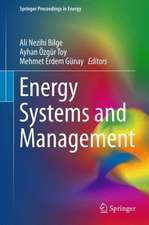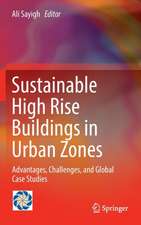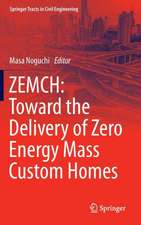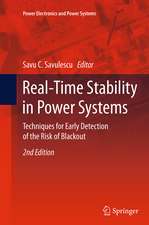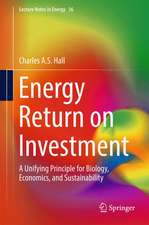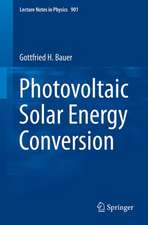Applications and Efficiency of Heat Pump Systems: Proceedings of the 4th International Conference (Munich, Germany 1–3 October 1990)
Editat de Ian E. Smithen Limba Engleză Paperback – 22 aug 2014
Preț: 946.10 lei
Preț vechi: 1153.78 lei
-18% Nou
Puncte Express: 1419
Preț estimativ în valută:
181.06€ • 188.33$ • 149.47£
181.06€ • 188.33$ • 149.47£
Carte tipărită la comandă
Livrare economică 12-26 aprilie
Preluare comenzi: 021 569.72.76
Specificații
ISBN-13: 9783662301814
ISBN-10: 3662301814
Pagini: 200
Ilustrații: VI, 189 p. 89 illus.
Dimensiuni: 210 x 279 x 15 mm
Greutate: 0.46 kg
Ediția:Softcover reprint of the original 1st ed. 1991
Editura: Springer Berlin, Heidelberg
Colecția Springer
Locul publicării:Berlin, Heidelberg, Germany
ISBN-10: 3662301814
Pagini: 200
Ilustrații: VI, 189 p. 89 illus.
Dimensiuni: 210 x 279 x 15 mm
Greutate: 0.46 kg
Ediția:Softcover reprint of the original 1st ed. 1991
Editura: Springer Berlin, Heidelberg
Colecția Springer
Locul publicării:Berlin, Heidelberg, Germany
Public țintă
ResearchDescriere
The papers in this collection have originated from Britain, Eastern and Western Europe and India, with the delegates coming from fifteen countries, including a strong contingent from Japan. This indicates a widespread interest in the application of heat pumps. The heat pump suffers from an environmental dichotomy. On the one hand it saves fossil fuel energy, thereby reducing CO emissions. On the other hand, in the vapour compression form, 2 it generally employs CFCs which are destructive to our protective ozone layer as well as contributing to the greenhouse effect. Taking the first, heat pumps, perhaps have the widest application numerically in the heating (and cooling) of buildings and an excellent paper describes case studies concerning three large Norwegian hotels. In these, heat was pumped from the adjacent river or sea when heating was required, and during the summer, when cooling became necessary, to generate domestic hot water. The heat pumps were installed by SINTEF Refrigeration Engineering, Norway, and have demonstrated payback periods of about two years. The fractional total energy saving of the three hotels was 30% as a result, an impressive figure, indeed. A similar paper by a Belgian architectural consortium shows how this technique can be successfully applied to the cooling of a large television complex where considerable quantities of heat were being generated by the luminaries. In this exercise the cooling load was successfully pumped to provide hot water.
Cuprins
System design.- Design of a Vapour Compression Heat Pump in a Heat Exchanger Network.- Process Integration of Various types of Heat Pump.- Experimental Hybrid Heat Pump of 1000kW heating capacity.- A ‘Self-Regulating’ Heat Pump for Renewable Energy Applications.- Experimental Results of a Double-Lift Compression-Absorption Heat Pump.- The Compression-Absorption Cycle: A High-Temperature Application.- Working fluids and CFC replacements.- CFC Alternatives for High-Temperature Heat Pump Applications.- Prediction of Thermodynamic Properties of CFC Mixtures using the CCOR Equation of State.- Ethylchloride: A Viable Alternative for Medium and High-Temperature Compression Heat Pump Cycles.- Applications for heat pumps.- Potential for MVR in Indian Distilleries.- High-Temperature Process Drying with Hybrid Desiccant-Heat Pumps Systems.- Heat Pumps for Heating and Cooling of Hotels.- Thermodynamic Gestion and Thermal Comfort in a Solar TV Complex Building in Brussels: First Results.- An Open Cycle Absorption Heat Pump: A System for Drying Agricultural Products.- Heat Pumps with Different Energy Collectors in Army Barracks (Volkach, Germany): Results from Three Heating Seasons (1986–1989).- Predictive Control of a Hybrid Heating System Including a Heat Pump.- Feeding Large Heat Pumps from Sewage Water Treatment Plants.




